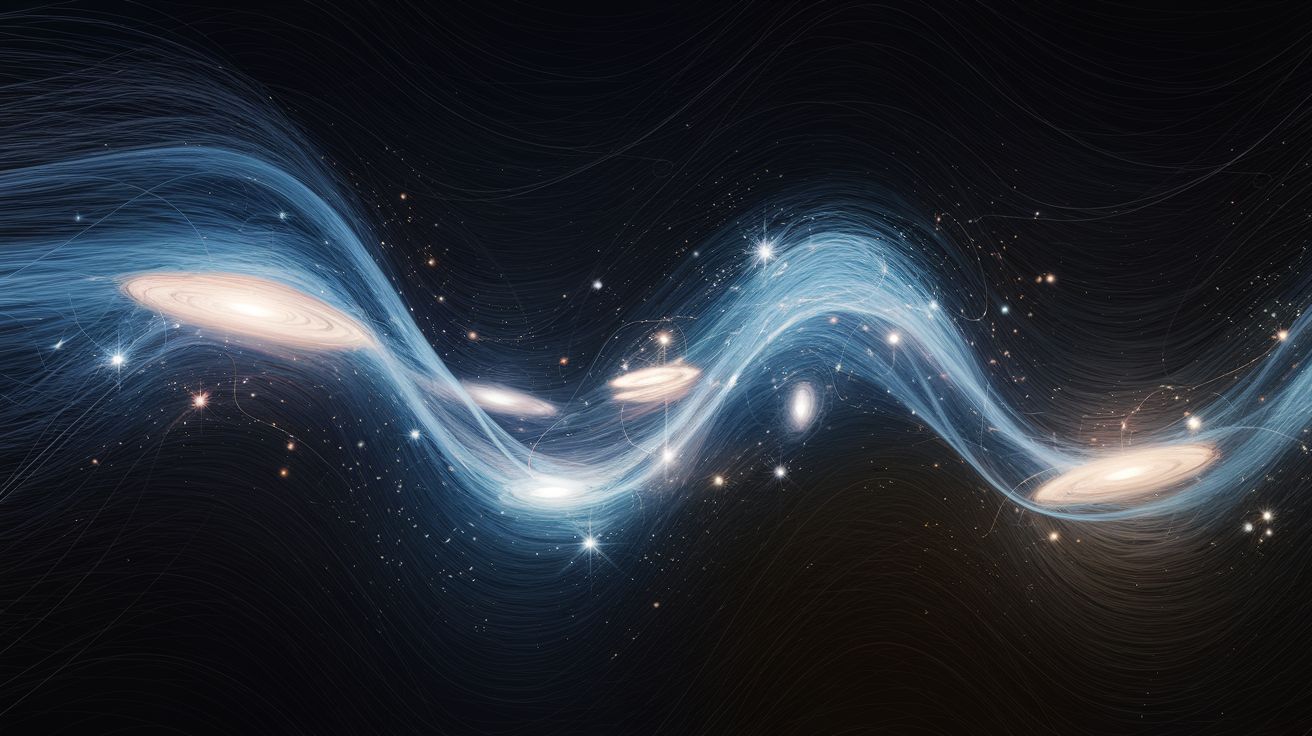Follow us on Google News (click on ☆)

Since its discovery in 1998, dark energy has been considered a cosmological constant, an unchanging force explaining the acceleration of the Universe's expansion. However, recent results from the Dark Energy Spectroscopic Instrument (DESI), an international project involving over 900 scientists, challenge this idea. By mapping the positions of millions of galaxies with unprecedented precision, DESI reveals hints of a dynamic dark energy, whose intensity may have varied throughout cosmic history.
A 3D map of the Universe with unmatched precision
DESI, located in Arizona, uses a telescope equipped with 5,000 optical fibers to observe the light from millions of galaxies. In three years, it has measured the position and distance of 15 million of them, producing the most detailed three-dimensional map of the Universe to date. This map reveals the large-scale structure of matter, marked by galaxy clusters and cosmic voids, offering an unprecedented view of the distribution of matter in the cosmos.
Using a technique called baryon acoustic oscillations (BAO), researchers have been able to trace the expansion of the Universe over 11 billion years. BAOs, imprints left by pressure waves in the early Universe, serve as a "cosmic ruler" to measure distances between galaxies. These oscillations, formed shortly after the Big Bang, have left a characteristic signature in the distribution of galaxies, allowing scientists to accurately measure the expansion of the Universe at different epochs.
The results show that dark energy appears to have been stronger in the past than it is today, a finding that contradicts the hypothesis of a cosmological constant. This variation suggests that dark energy could be a dynamic force, evolving over time. These observations, combined with other cosmological data, open the door to questioning current models and exploring new theories to explain the nature of this even more mysterious energy.
Towards a new understanding of dark energy
While these results do not yet constitute definitive proof, they add to other observations, such as those of the cosmic microwave background and supernovae, which point towards a dynamic dark energy. These converging data reinforce the idea that dark energy might not be a constant, but an evolving force whose intensity changes over time. This discovery challenges the standard model of cosmology, which relies on the assumption of an unchanging dark energy.
Researchers are now exploring alternative models, such as quintessence, which posits that dark energy is carried by a variable scalar field. This field, similar to the Higgs field, could explain why dark energy appears stronger in the past. These theories could not only shed light on the nature of dark energy but also solve other cosmological puzzles, such as the tension around the Hubble constant, which measures the rate of expansion of the Universe.
With even more precise data on the way, DESI and other projects like Euclid could well usher in a new era in cosmology. Future observations will allow testing these alternative models and determining whether dark energy is truly dynamic. If these results are confirmed, they could lead to a major revision of our understanding of the Universe and its evolution, marking a historic breakthrough in the field of fundamental physics.
To go further: What is dark energy?
Dark energy is a hypothetical force that makes up about 70% of the Universe. It is responsible for the acceleration of cosmic expansion, a major discovery made in 1998 through the observation of distant supernovae. Unlike gravity, which attracts objects, dark energy acts as a repulsive force, pushing galaxies apart at an ever-increasing rate.
Although its existence is widely accepted, the exact nature of dark energy remains one of the greatest mysteries in cosmology. In the standard model, it is represented by the cosmological constant, an intrinsic energy of spacetime that remains uniform over time and space. However, recent observations from DESI suggest that it could be dynamic, varying over the history of the Universe.
If dark energy is not a constant, it would imply that its properties change over time, paving the way for new physical theories. For example, it could be linked to a scalar field, similar to the Higgs field, but with effects on a cosmic scale. Understanding this mysterious energy is essential not only to explain the expansion of the Universe but also its ultimate fate: will it continue to expand indefinitely, or could it one day collapse back on itself?